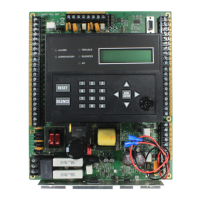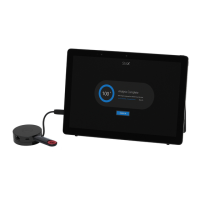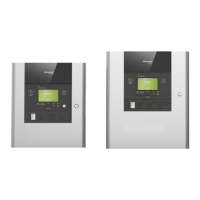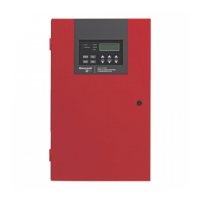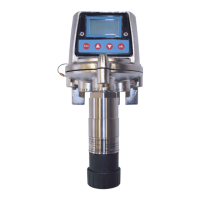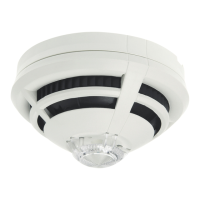114 6820 / 6820EVS Manual P/N LS10144-001SK-E:C 09/28/2017
Section 9: Programming
This section of the manual describes how to manually program the control panel from the built-in annunciator. Each subsection discusses
these menu options in detail. All options described in this section can be performed using HFSS Honeywell Fire Software Suite.
9.1 UL 864 / UL 2572 Programming Requirements
9.2 Modules
This section lists the options available under the module option in the program menu. The following modules are available for the con-
trol panel: 6815 & 5815XL SLC expander, 5860, 6860 & 6855 remote fire alarm annunciators, 5824 serial/parallel printer interface mod-
ule, 5496 intelligent power module, 5895XL intelligent power module, 5880 LED I/O module, and 5865 LED annunciator, EVS-50W,
EVS-100W, EVS-INT50W or EVS-125W audio/voice amplifiers, EVS-VCM voice control module, SK-NIC network interface card,
and EVS-RVM remote voice module.
9.2.1 Edit Modules
The features that can be edited when this option is selected are module ID, module name, class of wiring (Class A or Class B), or features
that are specific to the module to be edited.
To edit an existing module:
1. Enter the installer code. The panel will automatically go the main menu.
2. Select 7 for Program Menu.
3. Press 1 to enter module menu.
4. Press 1 to edit a module.
5. Use the Up or Down arrow to select the module you wish to edit, then press ENTER.
Editing Module ID
6. Press the up or down arrow key to modify the module ID.
Naming Modules
You can assign an English name to a system hardware module to make it easier to recognize on a display.
IMPORTANT!
Before any customized programming is done, JumpStart should be run first. After JumpStart is run, thoroughly test the system.
The reason the system should be tested after JumpStart is because JumpStart automatically programs the system, searching for
and configuring all SLC and SBUS devices it finds. JumpStart allows you to confirm the integrity of the installation prior to per-
forming any custom programming. After determining that the hardware is properly installed, custom programming can be per-
formed.
NOTICE TO USERS, INSTALLERS, AUTHORITIES HAVING JURISDICTION, AND OTHER INVOLVED PARTIES: This
product incorporates field programmable software. In order for the product to comply with the requirements in the Standard for
Control Units and Accessories for Fire Alarm Systems, UL 864 and UL 2572, certain programming features or options must be
limited to specific values or not used at all as indicated below.
Programming
Option
Menu Item
Permitted
in
UL 864
(Y/N)
Permitted
in
UL 2572
(Y/N)
Possible
Settings
Settings
Permitted in
UL 864
Settings
Permitted in
UL 2572
Time Options Auto-resound Yes Yes 4 hrs, 24hrs 4 hours if using
SWIFT devices
4 hours if using
SWIFT devices
Time Options Low AC Report Delay Yes Yes 0–30 hours 1–3 1–3
Display Oldest Event Y (Enabled) Yes Yes Yes & No Yes Yes
N (Disabled) No No Yes & No No No
Initial Delay 0-28 Yes Yes 0-28 3 3
Inter Message Delay 4-32 No No 4-32 4-32 4-28
Alarm Verification Alarm Verification Yes Yes 60-250
(confirmation
period)
60 60
Auto Reset EVS MIC
Triggered Event
Auto Reset EVS MIC
Triggered Event
Yes Yes Never
Timer Event
Disabled
Never
Timer Event
Disabled
Never
Timer Event
Disabled
EVS Input EVS Input Yes Yes Latching
Non-Latching
Latching Latching
Event Priority CO Alarm No No Yes & No No No
NOTE: Internal devices and SK-NIC are not able to have their module ID edited.
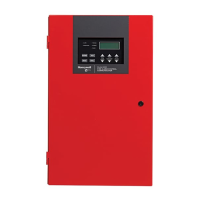
